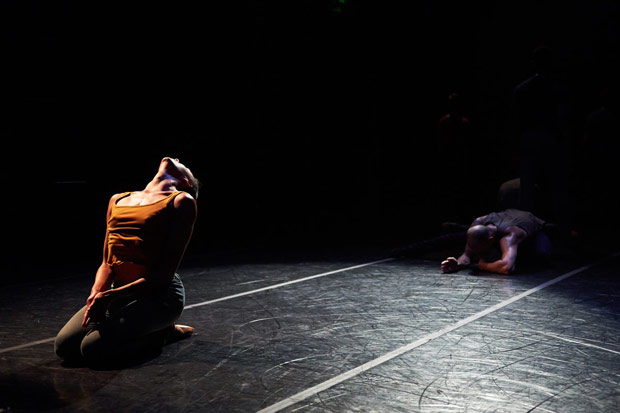
© David DeSilva. (Click image for larger version)
Amy Seiwert’s Imagery
Traveling Alone, Starting Over at the End, Back To
Joyce Theater Ballet Festival
New York, Joyce Theater
15 August 2015
www.asimagery.org
www.joyce.org
Amy Seiwert, a San Francisco-based choreographer, is gifted. For the last several years, she has held the position of Choreographer in Residence at Smuin Ballet, where she has arguably surpassed her mentor, the troupe’s founding father, Michael Smuin, in choreographic talent. But it is her own troupe – Amy Seiwert’s Imagery – that came brandishing her wares this summer at the tail end of the Joyce’s Ballet Festival.
Seiwert may be talented, but like many artists, she can be restless. Traveling Alone from 2012 opened the Joyce program and closed with rapturous applause. The crux of the work appeared to be about transition, of a place in flux – between a glitch, technologically-driven world and a more freeform vision.
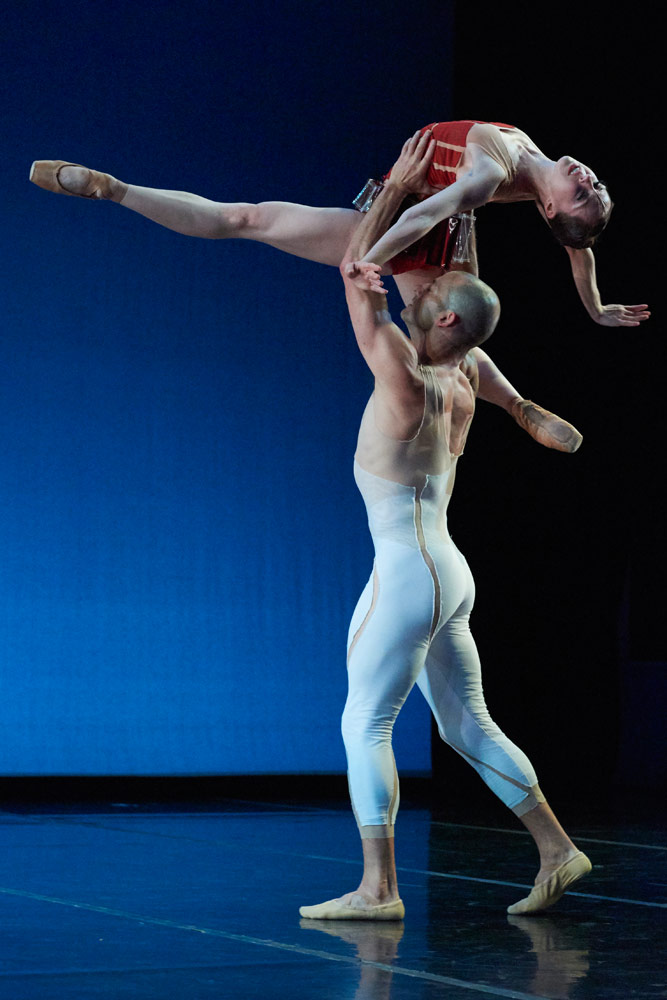
© David DeSilva. (Click image for larger version)
Clad in a gridded garnet leotard with a geometric red cellophane “tutu,” Dana Benton opened the work with a dynamic spotlit solo. She dances as if possessed, a stressed-out android trying to fulfill a role that has been programmed into her. Her eyes are wild, feral even, and, at least initially, she appears to be a leader of sorts.
The music, by Max Richter (neither the Playbill nor the repertoire listed on Seiwert’s website tells us which pieces), vacillates between squeaking electronic and his melancholic piano and string orchestrations.

© David DeSilva. (Click image for larger version)
Traveling Alone has a strong “old versus new” theme going on. Dancers take first position with their arms in high fifth, then drop suddenly like hot potatoes and rock to an angled, contemporary pose. There is a highly romantic pas de deux, which included a costume change from a techie tutu to a skirt with long, floaty strips of white georgette – something out of an ice-skating competition. Was this the analogue princess, to contrast with Benton’s frenetic techie movements? All balletic classicism and romance? I don’t know, but Seiwert’s choreography for Benton was the most interesting, at one point the taut tug of a partnered arabesque as mesmerizing as a taffy machine in the window of a candy store.
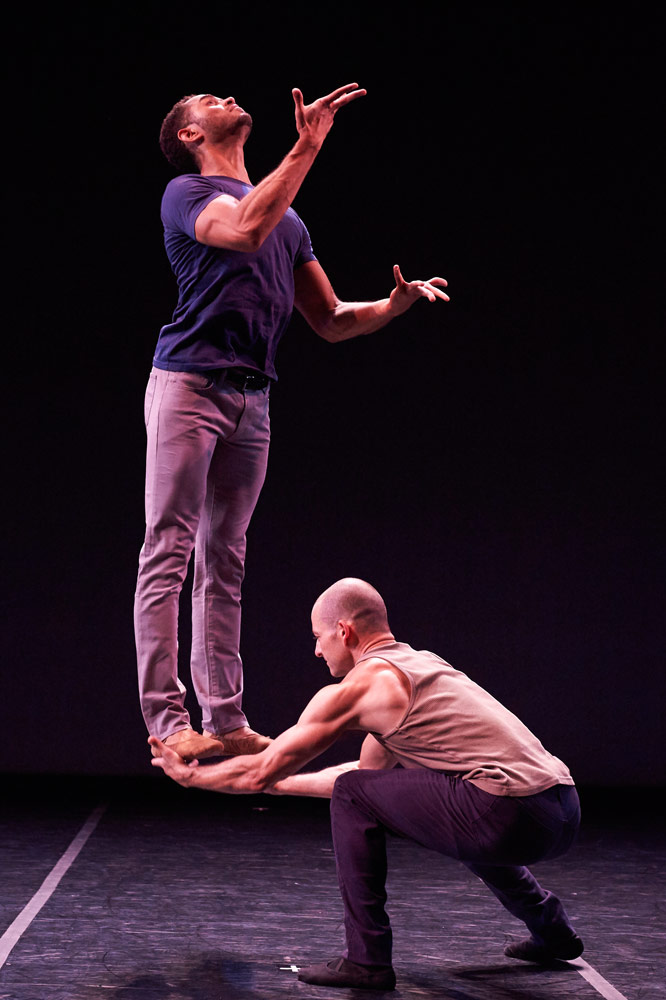
© David DeSilva. (Click image for larger version)
A collaboration between Bay Area dance stalwart, KT Nelson (co-artistic director of ODC/Dance) and Seiwert, Starting Over at the End, set to Schubert lieder, pushes the dancers to some blazing moments of high dexterity. Rachel Furst – clad in a loose, silken red blouse and black leggings – opens the work with a beautifully restless solo. Furst flickers like a flame with lissome majesty. She is just one of many examples of Seiwert’s cadre of exceptional female dancers who can flit between the sinewy, gooey, gaga-influenced contortions and the formal rigors of classical ballet and nail it – their precision on par with troupes of major international repute. The men get some meaty, animalistic partnering, which frequently requires the same contrast between soft and hard. While Starting Over at the End exhibits this with, at times, an exhilarating clarity, the work as a whole is not as cohesive as it could be. Still, it’s possible there could be more and the Nelson-Seiwert collaboration could bear more fruit.
It’s possible that Seiwert is at her best when she exhibits her strong Paul Taylor bent. Dear Miss Cline, a suite of dances set to Patsy Cline songs, was an enormous success when it debuted with Smuin Ballet in 2011, and has now been staged with other companies. The finale of the Joyce program, Back To, created this year and set to Gillian Welch songs, is in the Cline manner, both as an expression of a type of Americana and as a way to play with narrative (something her mentor Smuin was fond of), using lyrics to motivate movement.
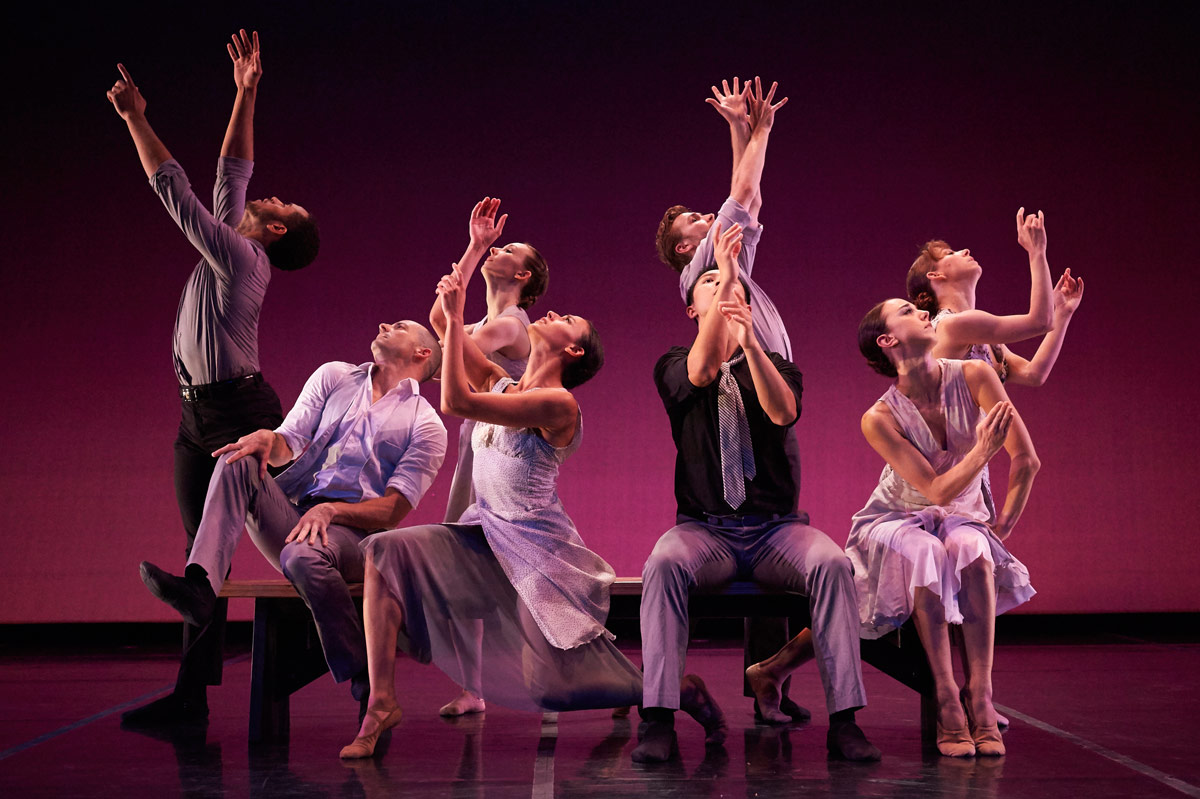
© David DeSilva. (Click image for larger version)
Welch’s melancholic, non-vibrato voice echoes the resigned melancholy of the West. As coined once by a friend, “country” music – bluegrass, Appalachia, folk – and its iterations are simply the “white man’s blues,” and Welch’s lyrics are full of churchgoings, broken hearts, and whisky. Compared to the rest of the Joyce program, here Seiwert is refreshingly uncomplicated, leaving air between the steps, many of which include the Taylor-esque skips, slides and skirt flicks. Look closely and you’ll see, possibly unconscious, references to early modern choreography (Nijinsky’s faun). However it’s not as complete as Cline was.
Seiwert gives the dancers some brief moments of in-sync, corps choreography but breaks it off a hair too quickly, splintering the motion; ditto some solo moves which could have increased potency with four reps instead of just two or three. It dilutes the power of her choreographic presence and makes the work as a whole feel more fragmented than it needs to be.

© David DeSilva. (Click image for larger version)
This is being picky, however. Seiwert gives some outstanding solos to Furst and Annali Rose. It is Rose who closes the work with a solemnity frequently reserved for the somber sections of Ailey’s Revelations, and it is her image – seated on a bench center stage, her legs crossed and toes pointed, head down and hands in her lap – that stays in the mind, a simple, elegant ending to a lyrical, Americana homage.












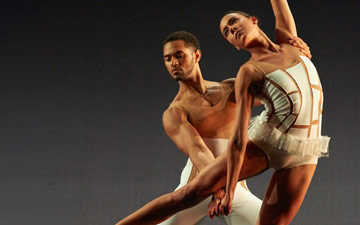
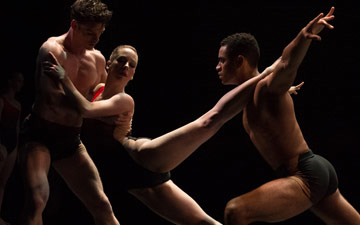
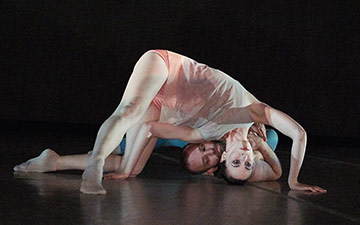
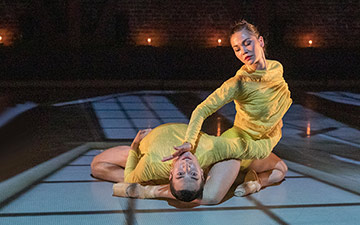
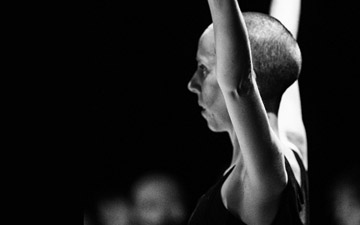
You must be logged in to post a comment.